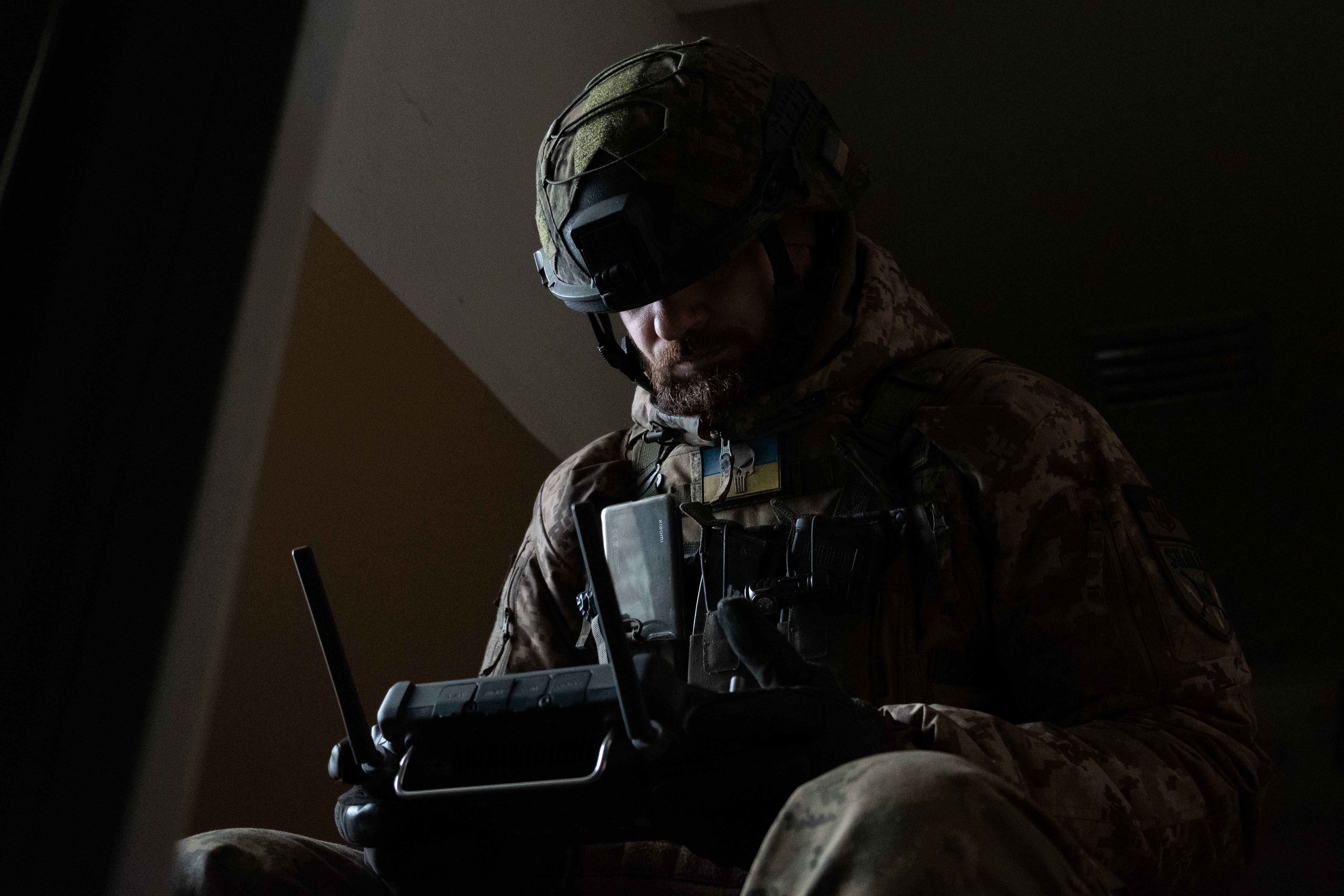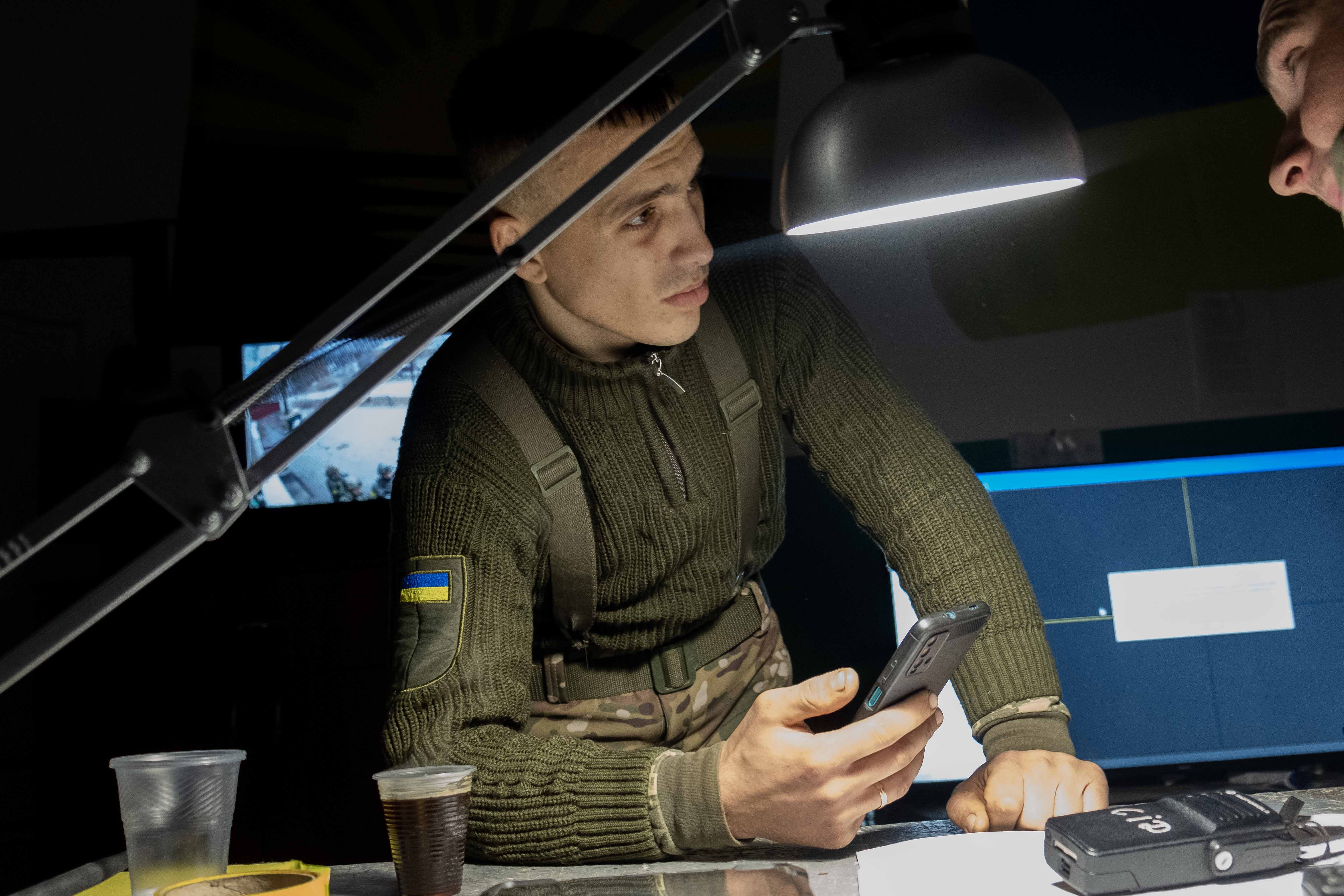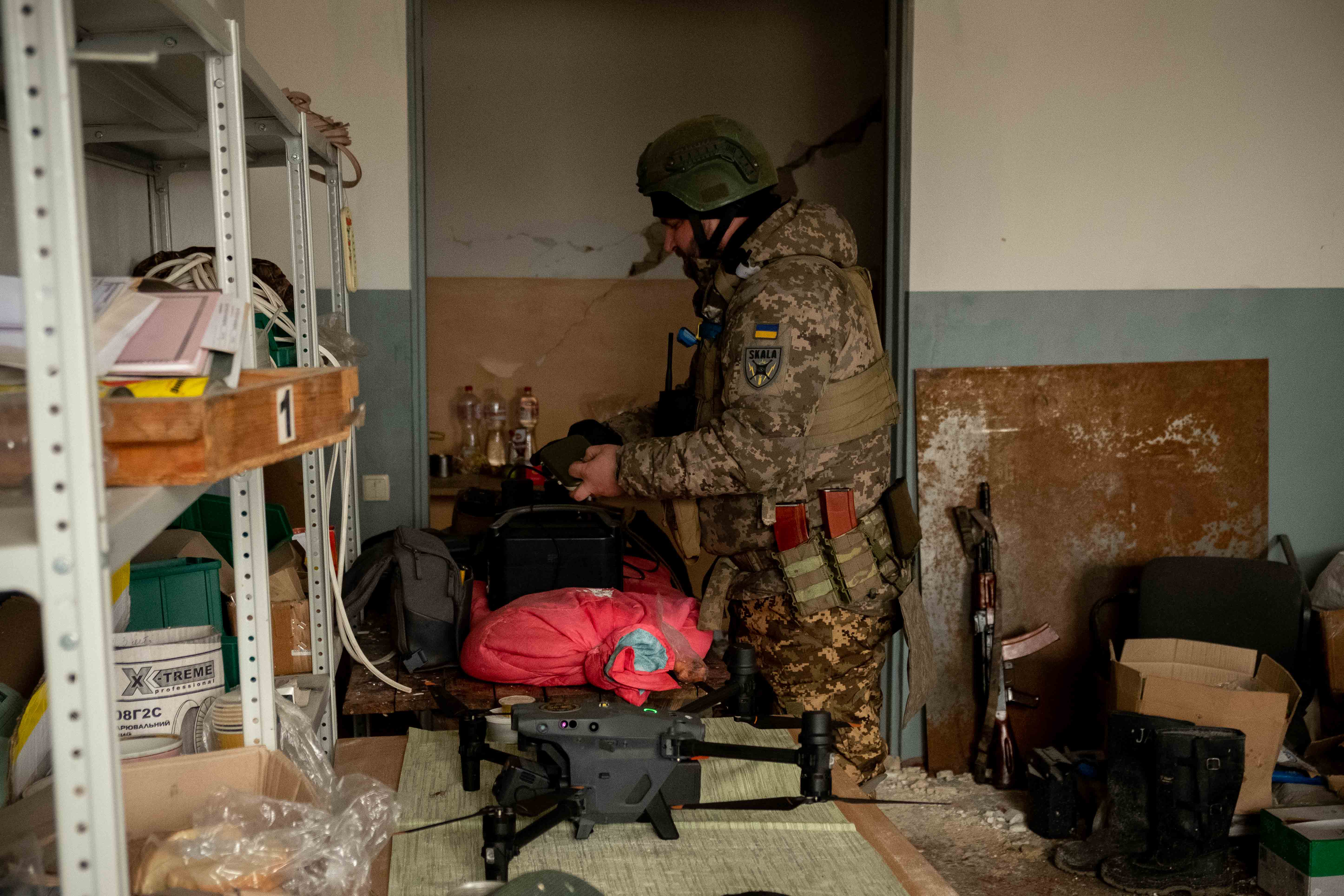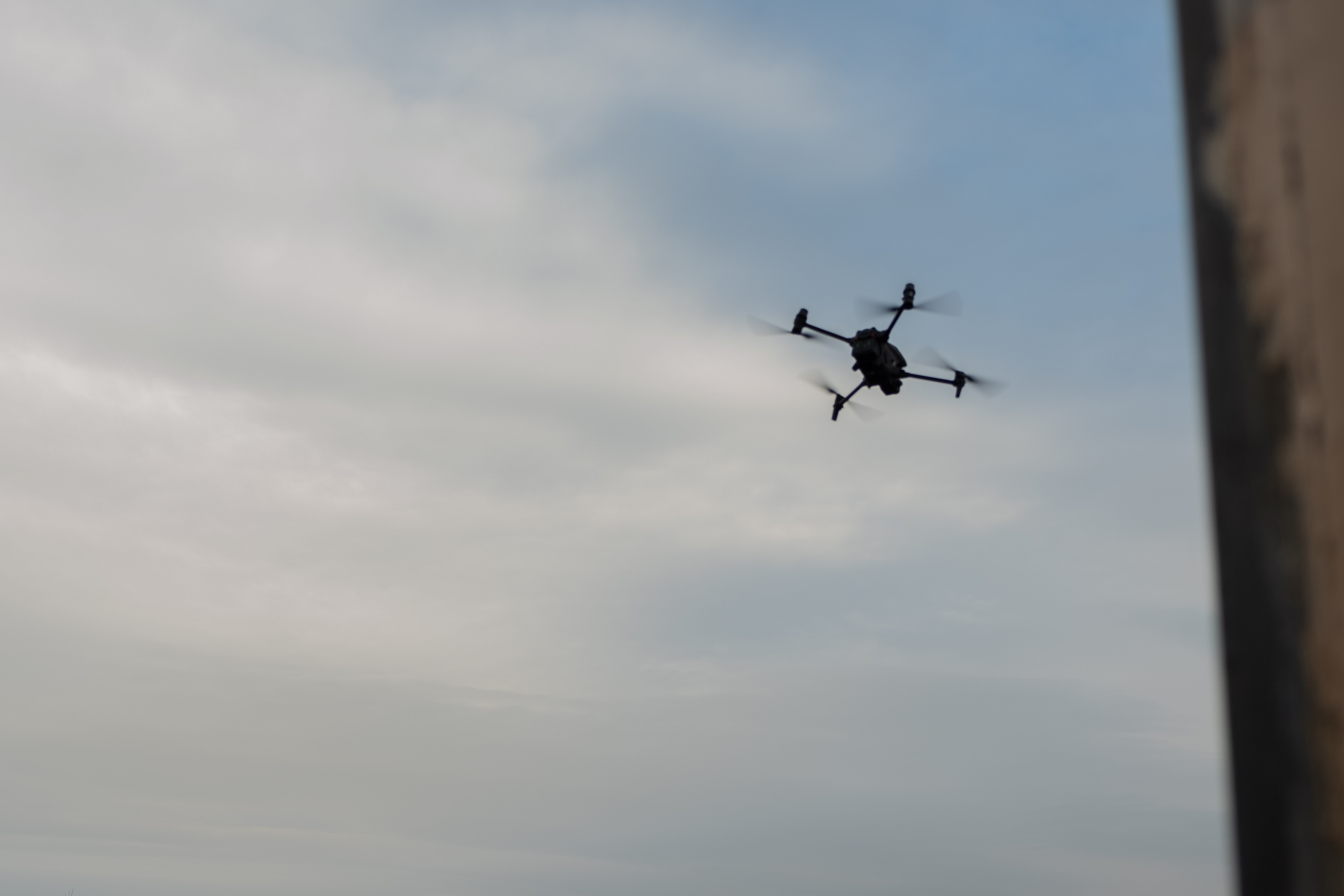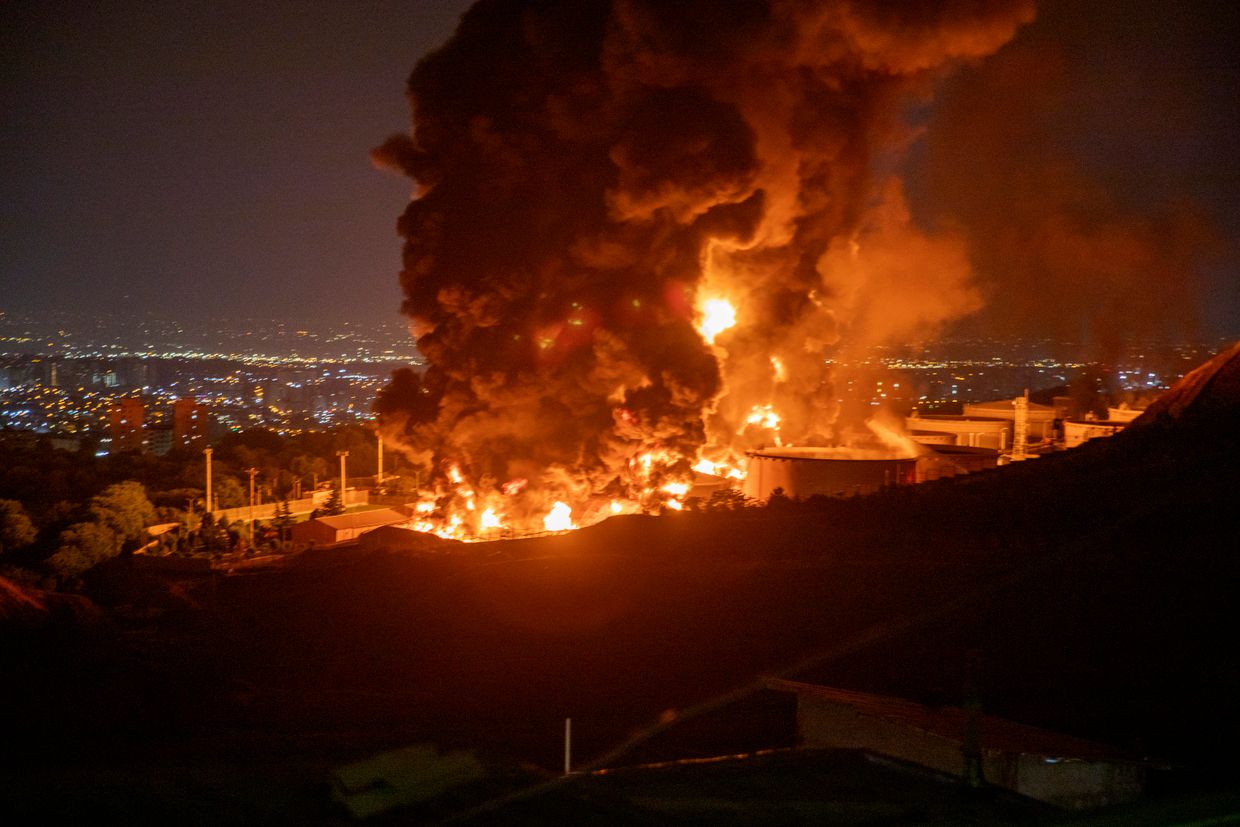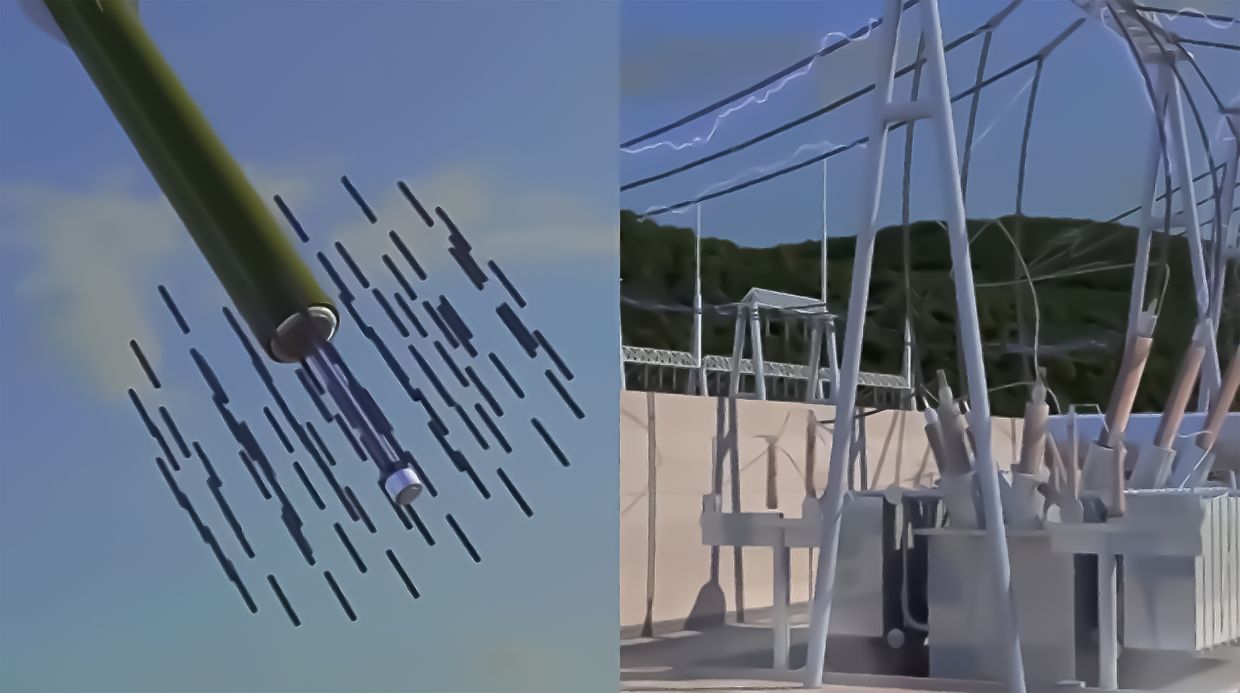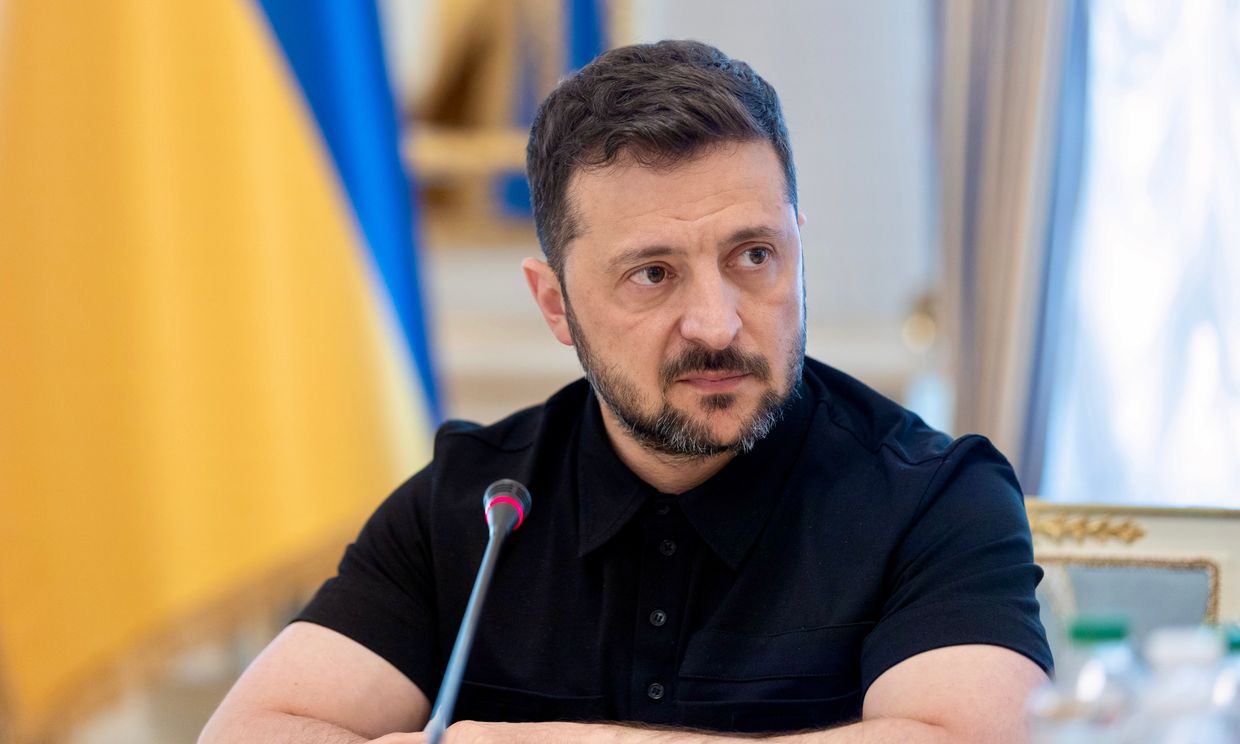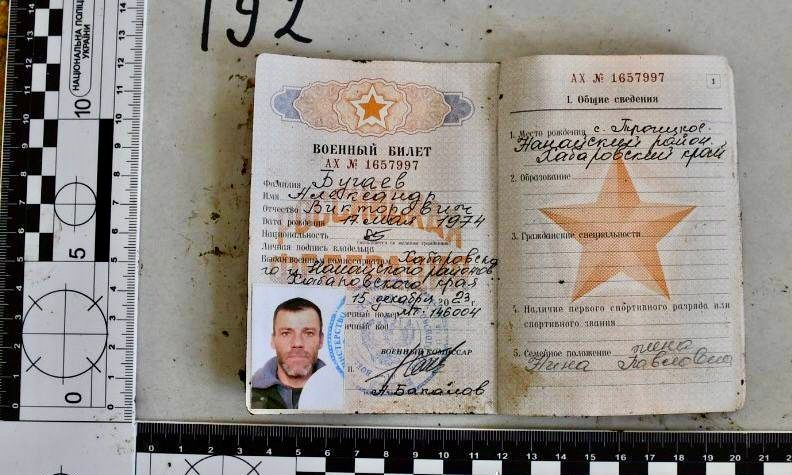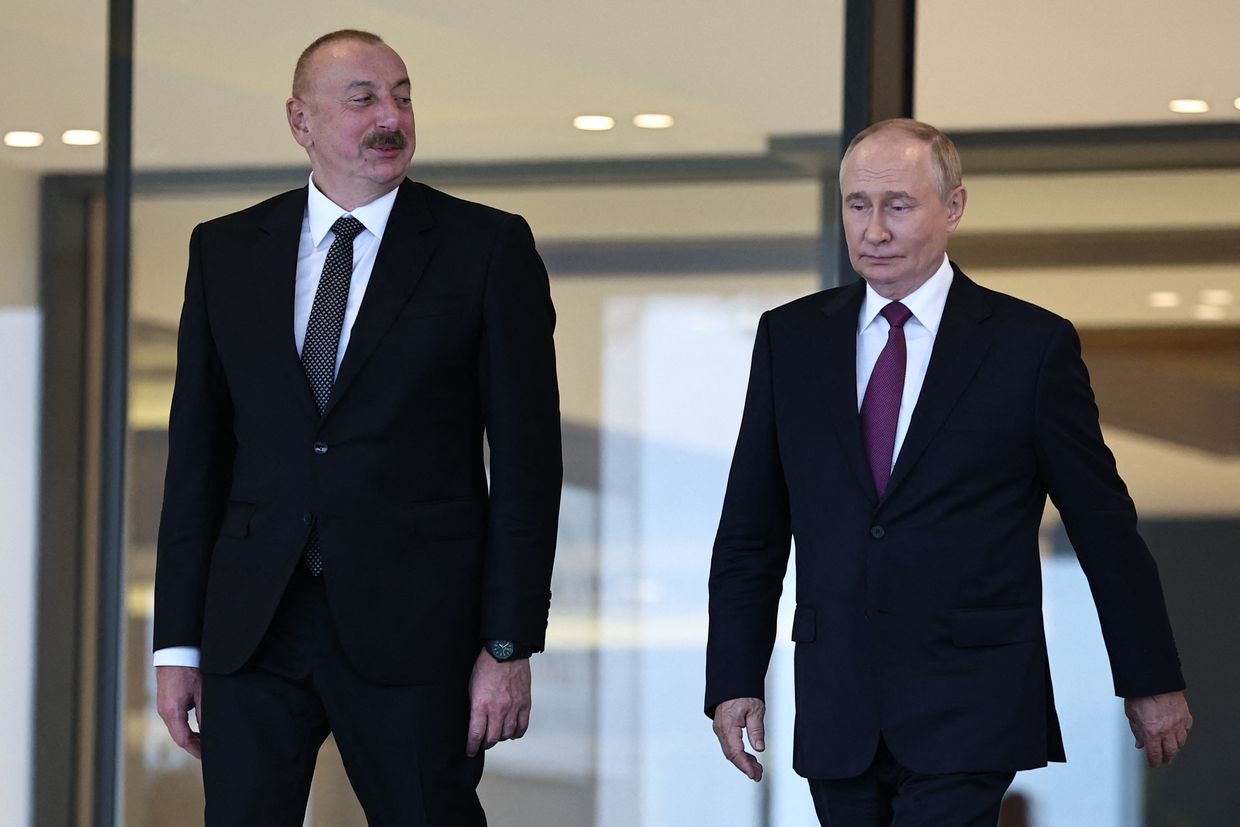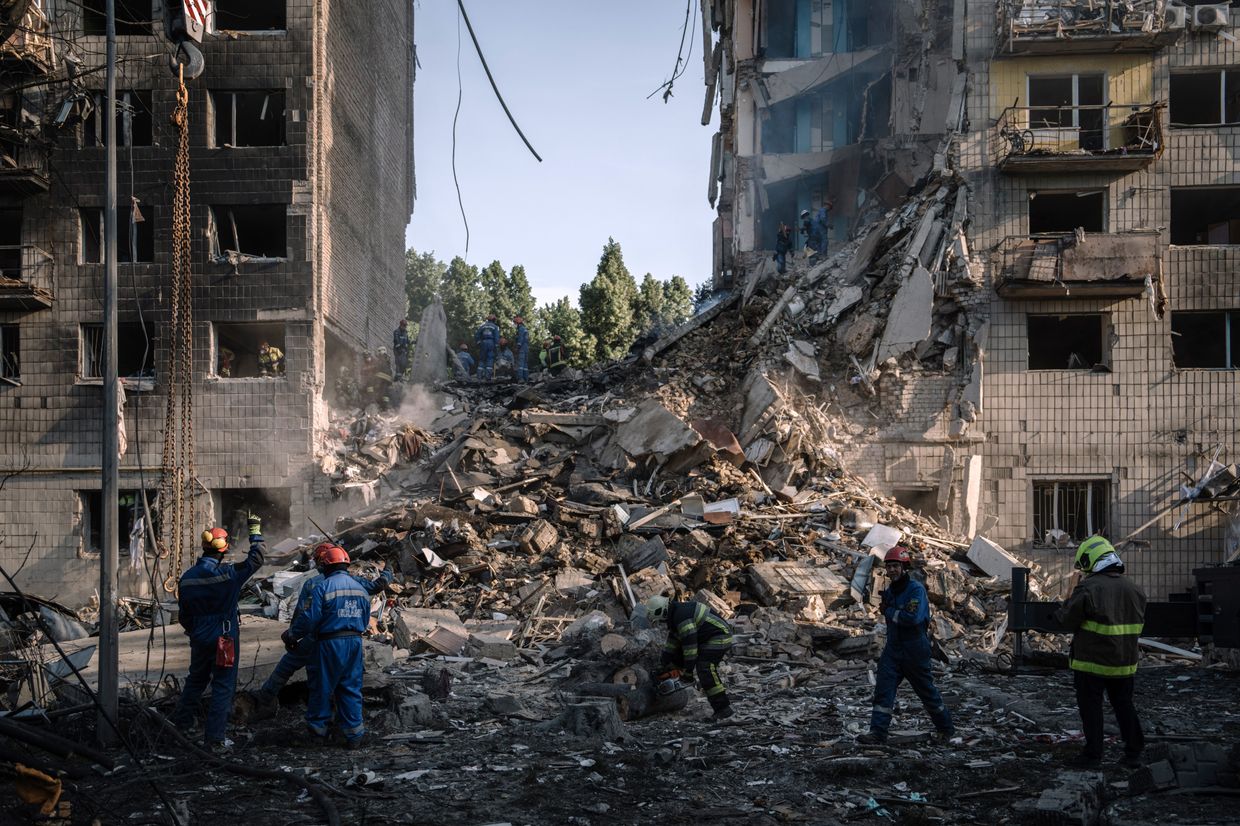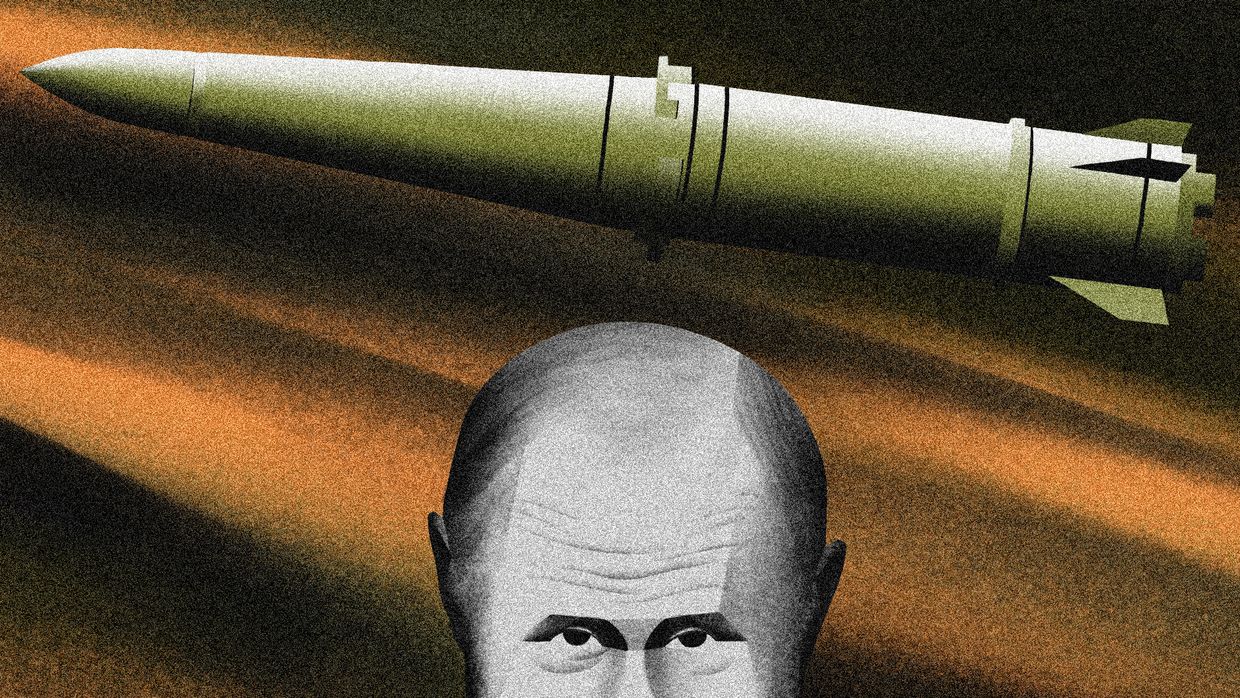Editor’s Note: The Ukrainian soldiers featured in this article are identified by first names and callsigns to protect their identities.
BAKHMUT, Donetsk Oblast – On the screen of a large handheld remote control, a Ukrainian drone operator scans a gray, washed-out landscape of ruined houses and muddy trenches.
It isn’t long before movement is spotted. A small Russian assault team is advancing on a Ukrainian trench in a field, just past the last line of houses on the edge of the city.
“Look, he’s shooting now,” says the drone pilot, pointing to a shabby gray figure with a rifle raised. “And another, just over there, he just threw a grenade.”
The Russian and Ukrainian soldiers are now less than 30 meters from each other.
“We don't have anything to shoot at them with, but at this point it would be too dangerous anyway, we could hit our own guys,” says the pilot.
Caked in the mud of their landscape, the Russian soldiers disappear from sight as soon as they appeared. The pilot takes note of the spot and pans away, looking for other targets.
The remote is in the hands of "Rem", a former car dealer from Dnipro. Rem belongs to Skala, a separate battalion in the Ukrainian army tasked with aerial reconnaissance and assault operations that has been posted in Bakhmut since late autumn.
Sitting in the corridor of an industrial building inside Bakhmut city in the eastern Donetsk Oblast, Rem and his senior officer Duke are operating a high-end DJI quadcopter drone, prized for its great zoom capabilities.
In coordination with several different Ukrainian units in their sector, the pair identify targets, correct artillery fire, and provide general reconnaissance support with their high-definition broadcast.
Not far from where fighting was earlier seen, Rem has spotted something. “It’s an automatic grenade launcher position, providing cover for the assault.”
“Pions with clusters,” Rem calls into the radio, specifying his weapon and munition of choice for the target. Firing 203mm shells, the 2S7 Pion, a formidable Soviet-era self-propelled artillery wielded by both sides, is the largest caliber howitzer used in the war.
“It’s perfect for an enemy gathering of this size,” he says, “but we will hit them with whatever we have.”
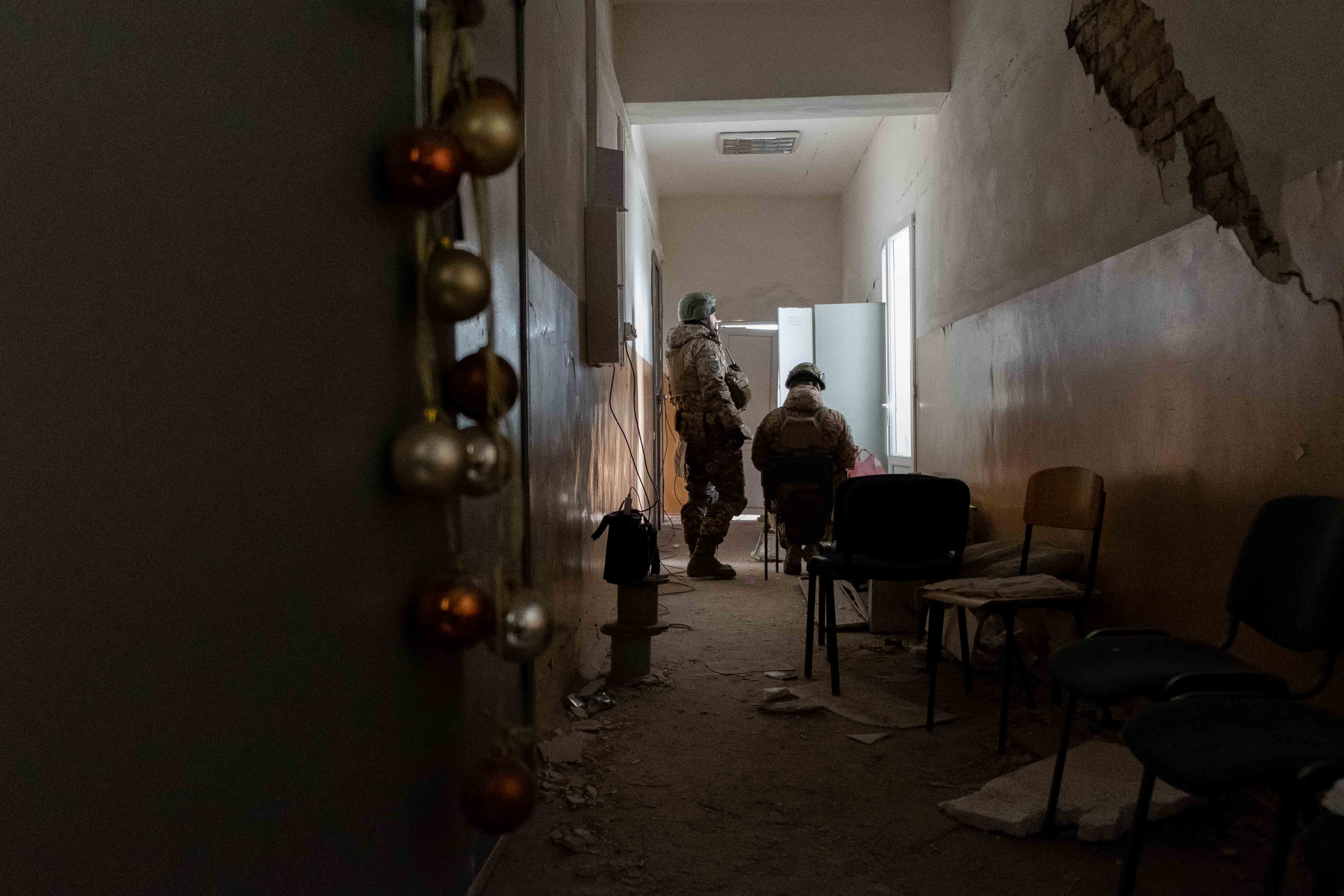
Commercially available drones have carried out a multitude of functions on both sides of the war, with much of them developed right on the battlefield.
As Russia continues to assault Bakhmut and its outskirts, the site of some of the heaviest hostilities along the entire front line, drone teams like Rem’s are not short of work.
Bakhmut lies at the intersection of several major roads crucial to Ukraine’s defense of northern Donetsk Oblast. After a series of major Russian battlefield defeats over autumn, the accent on Bakhmut is also political, to achieve even just one small military victory and counter concerns at home that Russia is losing the war.
Under cover of artillery and grenade launcher fire, small Russian assault squads are making slow and steady advances, capturing Ukrainian positions and doing their best to defend themselves against counterattacks.
Observing the work of the Skala drone unit for three hours, the Kyiv Independent gained a rare, real-time look at the fierce battles for Bakhmut unfolding less than two kilometers away.
“What hurts is the understanding that they are already in this forest here,” says Rem, pointing at a tactical map. “From there they have direct line of sight, even a tank could hit us here.”
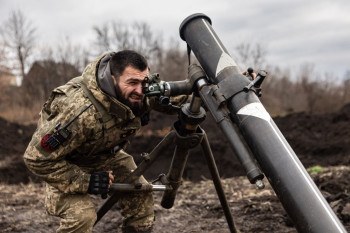
Eyes of the artillery
Flying out with a fresh battery, Rem gets the word that the Pions are ready.
To his frustration though, the howitzers have taken aim at a different target, a warehouse about a kilometer away where Russian soldiers were spotted earlier.
Rem repeats his request to strike on the grenade launcher position, but the crew says they have already dialed in the massive Pions to hit the warehouse. With a sigh, Rem gives the “all clear.”
“Fire,” comes the word over the radio, followed immediately by “I’m watching” from Rem. The lurching boom of the huge weapon comes with a delay, easily distinguishable from the rest of the fighting.
A tense silence hangs in the corridor while the shell flies through the air. The first shot lands about 20 meters short of the target, while the second overshoots, sending a cloud of smoke up from behind the building.
Having placed two shells on either side of the target, the Pion crew splits the difference, landing the third right by the door where seven Russian soldiers were earlier seen entering. A fourth also hits nearby, raising the likelihood of casualties inside.
“Thank you for your fire,” says Rem over the radio.
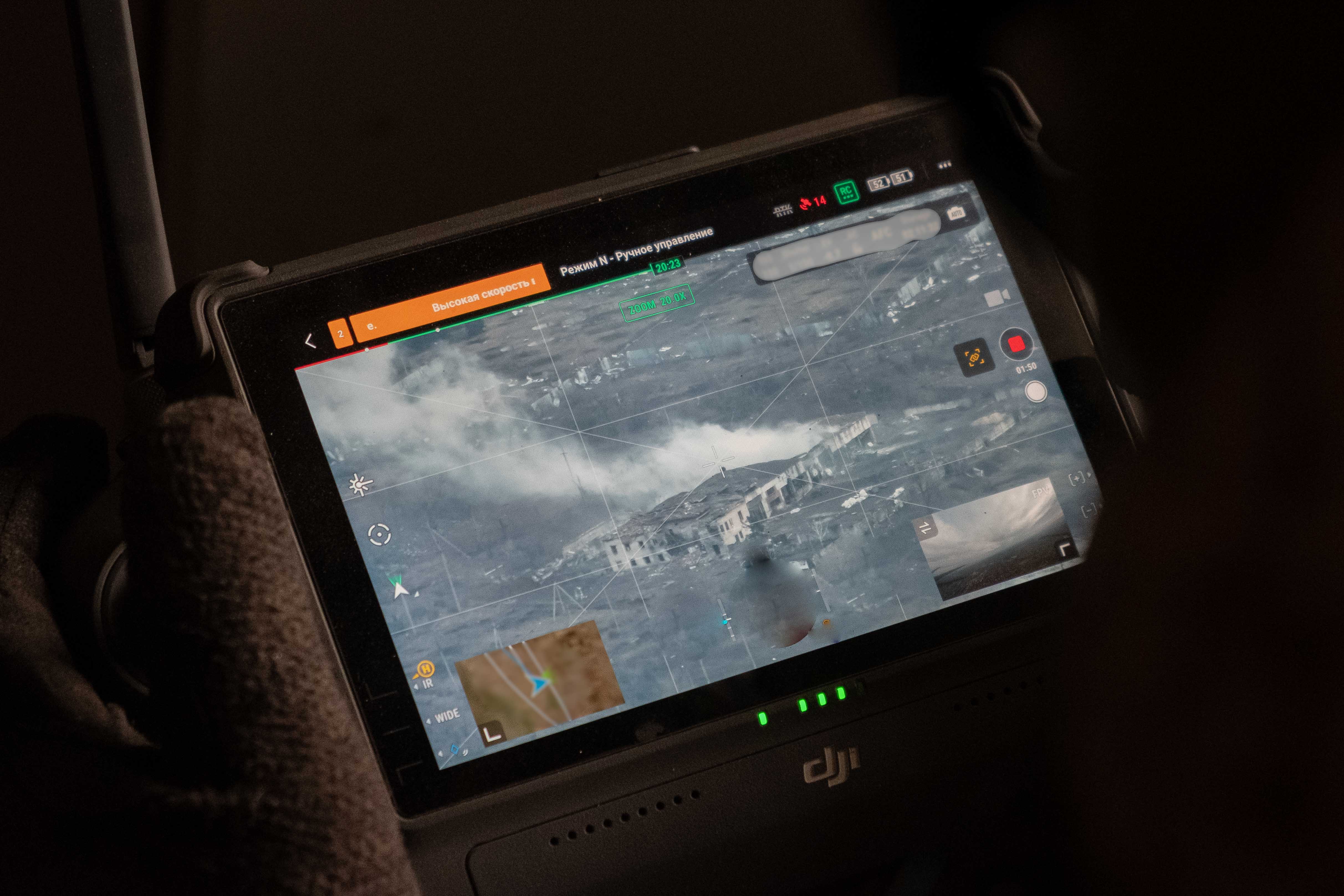
In ideal conditions, with artillery at the ready, it can take as little as five minutes between the drone pilot spotting a target and Ukrainian artillery engaging it.
“We sometimes see videos of Russian soldiers complaining about how easily and quickly Ukrainians are able to call for artillery strikes,” says Duke. “It’s much harder for the average soldier to do the same across the Russian chain of command.”
Finally, a new artillery crew is free to engage the grenade launcher position Rem wanted to hit earlier. This time, it’s a Polish-built Krab, firing 155mm NATO standard shells.
The 155mm artillery pieces are highly praised in the Ukrainian army, with a reputation for superior accuracy over Soviet-era weapons. This time, something goes wrong, as the shell overshoots its target by over 100 meters.
“Not bad, not bad,” says Rem sarcastically to the Krab crew, “but nowhere near where we wanted to hit.”
The second shell is a great improvement, but the third is once again way off.
“I guess they probably won't hit,” he says quietly.
The crew tell Rem they’re firing one last shell. The ground explodes right in the middle of Rem’s crosshairs. A direct hit.
“This one was beautiful,” he says. “That's what I wanted, straight in the ravine. I'm happy.”
As winter drags on, ammunition shortages, especially of 152mm and 122mm howitzer shells, are plaguing both sides.
Reportedly filmed near Bakhmut sometime late in December, a video emerged on social media of Wagner Group soldiers saying that they had run out of artillery ammunition in the area, berating the Russian General Staff in an address full of expletives. Wagner Group, a Russian state-controlled paramilitary organization, has been playing a major role in the offensive on Bakhmut.
Speaking to the Kyiv Independent, Ukrainian soldiers from different units around Bakhmut noted the drop in Russian artillery intensity in recent days, but warned against optimistic conclusions.
Meanwhile, Ukraine’s ammunition problems are well-known, as supplies of Soviet-era shells in Europe run low and few facilities are capable of producing them. It wasn’t until December that Ukraine announced the launch of domestic manufacture of the shells.
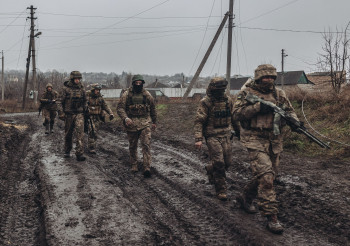
‘Presents’ from above
Starting in summer, both sides began to modify commercial quadcopters for a particularly gruesome task: dropping improvised bombs on enemy trenches.
One young pilot specializing in this brutal new form of warfare is “Contrabass,” who joined Skala in May, when the group was posted near Izium in Kharkiv Oblast.
Terrifying enough to watch on a screen, the scenes of the bombs slowly falling onto unwitting infantry can be devastating for soldiers’ morale.
Often, the wounded are abandoned in fright by those still able to move, writhing in pain in the mud before another bomb arrives to finish them off.
“In one area in Kharkiv Oblast,” Contrabass told the Kyiv Independent at the Skala base in Bakhmut, “we were dropping the bombs so much that their infantry and tanks apparently refused to fight.”
With a more static front line and a higher concentration of troops as is the case in Bakhmut, the role played by drone-dropped bombs is nonetheless reduced.
“The role they can play depends a lot on the situation,” said Contrabass. “When you bring them a ‘present’ like that, the chance of losing your drone is over 50%, they can be shot down fairly easily by small arms fire.”
“Right now we are going through a lot of drones, not everybody understands that here they are an expendable resource,” he said. “One can work for a month or two, or we could lose it on its first ever flight, and this is rarely the fault of the pilot.”
The constant need for drones is understood at the highest level of the Ukrainian leadership, evidenced by the Army of Drones initiative. Launched by the state fundraising platform United24, the drones initiative was promoted by international celebrities such as “Star Wars” actor Mark Hamill.
Contrabass is confident that the money is being well spent.
“These things on average can cost around $2,000, so to lose it on the first flight is always a shame,” he said.
“One commander told me that yes, it's a lot of money, but if you spotted just one successful strike, if you dropped just one bomb on those bastards, you have saved lives.”
Behind friendly lines
Just as the Krabs are finishing their work on the grenade launcher, Rem gets a call from the commander of an infantry battalion holding the line in his sector.
The commander has lost contact with four of his soldiers who had been in a trench just across the last street of houses on the city’s eastern outskirts. His voice is apprehensive.
“I need to check to the right of the petrol station,” the commander says to Rem. “My people were there, I need to know if the Russians crawled in.”
Rem scans the area. Here, every house has been destroyed beyond recognition, and little is left of the trees that once grew in between them.
Just across the last street, a haphazard line of trenches and foxholes marks the most forward Ukrainian positions. Beyond stretches a pockmarked field across which the Russian squads creep forward relentlessly.
The commander’s voice breaks the silence. “Maybe they retreated,” he says with a sigh, “the last thing they were saying was that their ammunition was running out.”
Suddenly, movement. Rem spots four soldiers in a shallow ditch on the Ukrainian side of the trench.
“It looks like they’re probably ours, he had some kind of grenade thrown at him and he's got his back to us,” relays Rem to the commander, referring to the soldier that moved first.
“They aren’t shooting yet, I need to come home and charge and I’ll be back.”
The drone takes just a few minutes to fly back to the base from the zero line. In a lightning-fast operation, Rem swings himself onto the roof and passes it to Duke, spending as little time as possible in enemy line of sight.
With a new battery pack fitted, the drone takes off from the same roof, ready to fly for another 20-25 minutes.
Upon return, the unidentified soldiers are seen throwing grenades into the trench, which is now understood to be Ukrainian-held.
“It seems like those are ours in the trench actually, which means that's the enemy in the forest,” says Rem. “Can we call a mortar or something in?”
Confident that the four soldiers are not those the commander was searching for, Rem contacts a 120mm mortar team nearby. Just as they are preparing to fire, an explosion can be seen near the trench entrance.
“Was that you?” Rem asks them. “If not, it looks like enemy mortars are already at work.”
Just as with the howitzers, the mortar team fires and waits for Rem to correct the hit, but no explosion can be seen in the vicinity.
“They’re struggling to aim at this target,” says Rem. “It happens often that we find our targets but there is nothing to hit them with. We here have done our job.”
Speaking later over the phone, Rem told the Kyiv Independent that two of the four Russian soldiers were wounded over the next few hours. One was evacuated by his two able-bodied comrades, while the other was abandoned in the field.
There was no word on the fate of the Ukrainian soldiers that were missing.
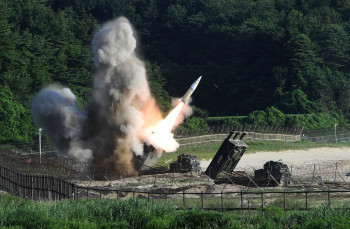
Death at close quarters
There are few who can judge the progress of the Battle of Bakhmut better than people like Rem, who watch the brutal firefights from above every day.
“Since we first arrived (in early November), we have lost a fair few positions,” he said. “It's not critical though, all of it can be taken back.”
According to Rem, the Russian soldiers advancing on the city have a clear method to their tactics, going far beyond the image of mindless human wave attacks often popular in social media discourse.
“Yes, of course they are fighting effectively, they are advancing after all,” he said. “I can't count their losses myself, obviously they are taking casualties but there is also a result to show for it.”
On Dec. 4, Ukrainian military spokesperson Serhii Cherevatiy had said that Russian forces were suffering around 50-100 casualties daily in the battles around Bakhmut. Speaking to the Kyiv Independent on Jan. 3, Cherevatiy reported 189 dead in the same area over the last day, with over 200 wounded.
With the offensive on Bakhmut largely the responsibility of the infamous Wagner Group, mobilized regular troops are seen more rarely here.
“I watch how they advance, they are calm and collected,” said Rem, “and maybe some of them even think they are fighting for some kind of beliefs.”
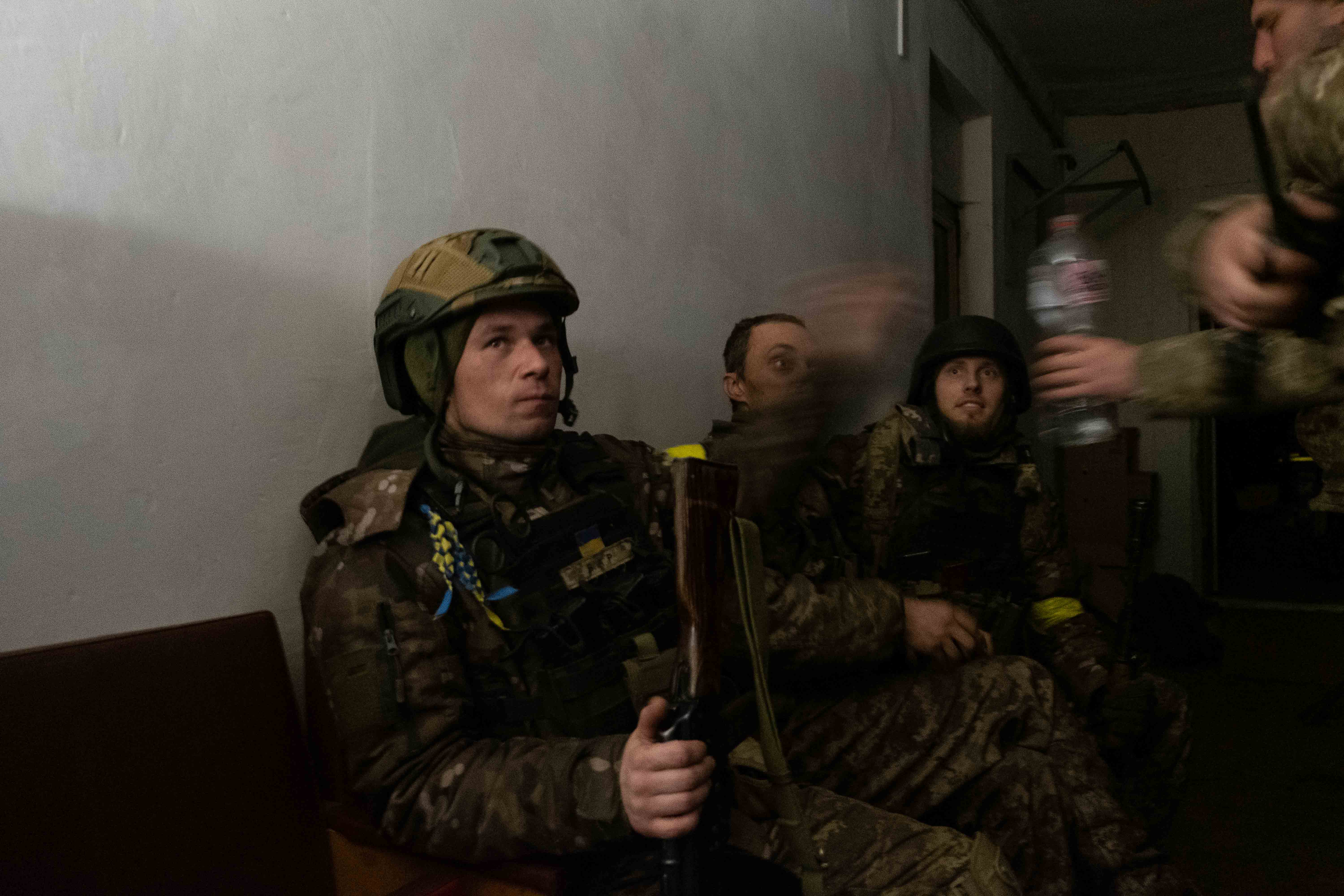
Looking ahead at how the battle will develop over winter, Rem is frank, but far from panicked.
“At the moment, it seems like the forces are pretty evenly matched here, and to conduct a successful offensive, you need a bigger advantage,” he said. “Whichever side can gain that advantage first will be successful.”
This is not to say that the Russian’s won’t have more tactical success in their endless squad-level assaults, Rem warned.
“If things stay more or less the same they will most likely advance bit by bit over the next few winter months, until they reach the Bakhmutka River,” he said.
“If there won't be any radical changes in the quantity of forces, I personally don't think they will make it any further than that.”
At the Skala base, the interview with Contrabass is interrupted by the return of an assault team from a mission to take back a lost position.
The dark corridor is filled with adrenalin, as helmets and rifles are tossed to the side as the men all find their own way to decompress.
“I am no hero here,” says Contrabass, standing quickly to vacate his seat. “You cannot begin to compare my work to what these guys do every day.”
Note from the author:
Hi, this is Francis Farrell, who wrote this piece from on the ground in the middle of Russia's neverending assault on Ukrainian cities in Donetsk Oblast. The Battle of Bakhmut is hell on earth, but it can be difficult to understand what is actually happening on the ground, so we watched it for ourselves. Ukraine achieved stunning victories over autumn, but the way Russia is able to keep up their attack shows that this war is far from over. Please consider supporting our reporting.




